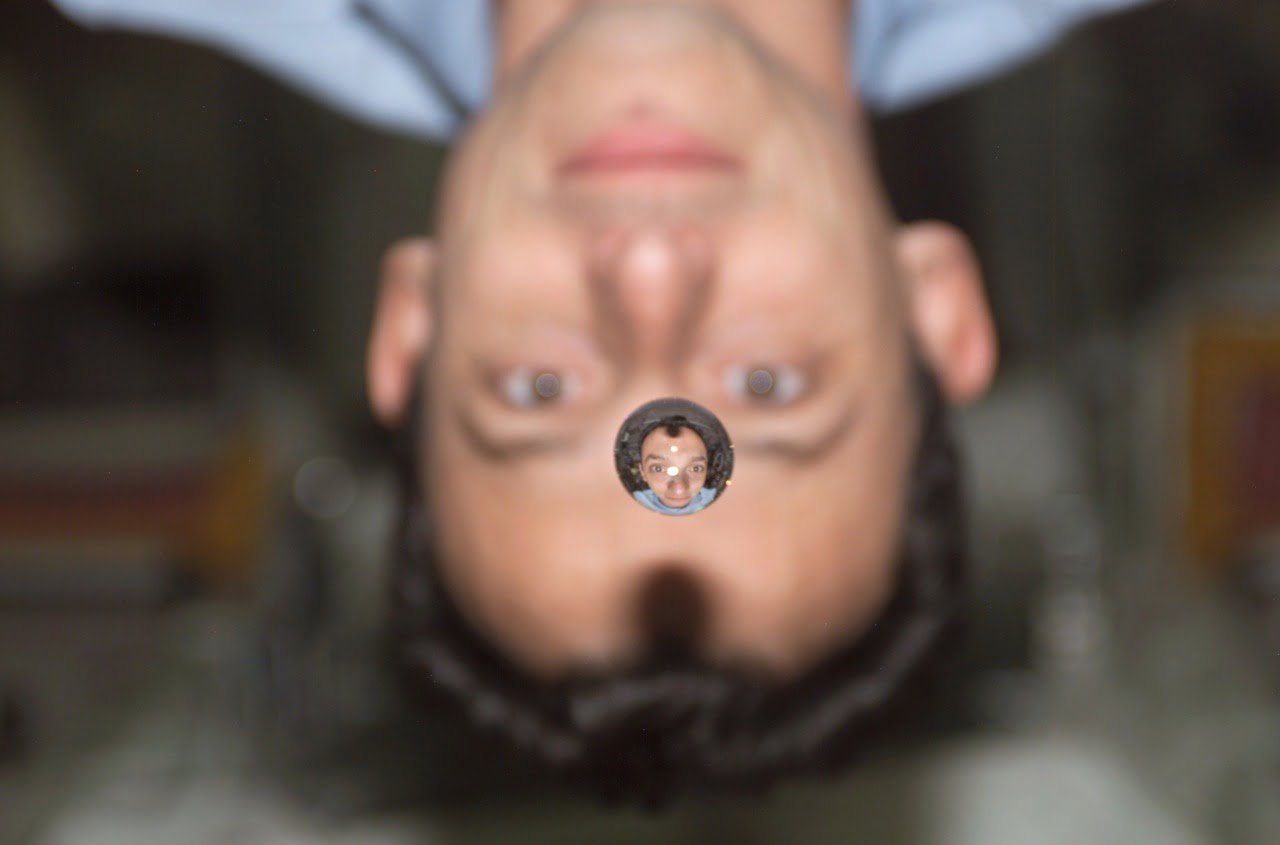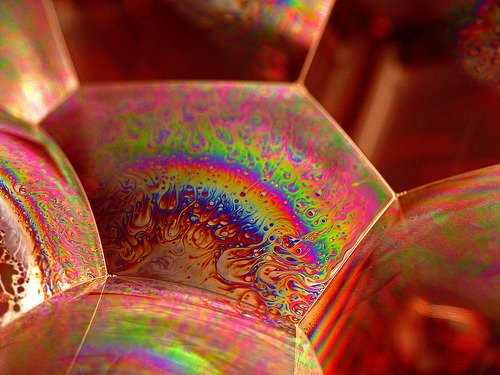Typically, shock waves are invisible to the human eye. Using sensitive optical techniques like schlieren photography, researchers in a lab can visualize sharp density gradients like shock waves or even the slight density variations caused by natural convection. But it takes some special conditions to make shock waves visible to the naked eye. The blast wave of the explosion in the photo above is a great example. The leading edge of the shock wave and the heat of the explosion create a strong, sharp change in density. That density change is accompanied by a change in the air’s refractive index. As light travels from the distance toward the camera, it’s distorted–more specifically, refracted–when it travels through the blast wave and its wake. And, in this case, that visual distortion is strong enough that we can clearly see the outlines of the shock waves moving out from the explosion. The apparent horizontal line through the blast wave is probably the intersection of a weaker secondary shock wave with the initial expanding shock wave. (Image credit: Defense Research and Development Canada; via io9)
Tag: refraction

Reader Question: Heat Shimmer
Reader dialectical-induction asks:
Being as its pretty hot right now where I am, I was always curious, what exactly is occurring when the air is seemingly rippling on a hot day. I’ve noticed this phenomenon most often close to the pavement or anywhere where it’s really hot. Is it moisture in the air, off the pavement. What’s going on?!
Good question! This is a pretty common optical illusion to observe, especially when driving on a hot day, and it goes by many names including mirage and heat shimmer. What’s happening is actually a case of refraction, much like when a straw in a glass of water looks bent. Near the ground, the air is significantly hotter (maybe 10 degrees Celsius) than the air about a meter above the surface. Changing air’s temperature also changes its index of refraction. When a ray of light passes from the layer of cooler air into the hotter air near the ground, it encounters a lower index of refraction and will bend upward toward the higher index of refraction. From an observer’s perspective, these distorted rays look like they are coming straight from the ground, making it look as if a refracted image of the sky is the ground. The brain will often interpret this as a spurious puddle reflecting the sky. Getting closer to the mirage makes it disappear because the light bends less (relatively speaking) as the angle between the observer and mirage source increases. The rippling effect you note is typically a result of this refraction occurring through hot, moving air. (Photo credit: M. Fern)

The Colors of Soap
The brilliant and beautiful colors of a bubble are directly related the the thickness of the soap film surrounding it. When light shines on the soap film, some rays are reflected from the upper surface of the film, while others are refracted through the film and reflect off its lower surface. These reflected rays have different phase shifts and their interference is what causes the colors we observe. The color patterns themselves reveal the interior flow of the soap film, in which gravity tries to thin the film and surface tension tries to distribute the film evenly. (Photo credit: R. Kelly, A. Fish, D. Schwichtenberg, N. Travers, G. Seese)

Bubble Lenses
In this video, artist Jesse Zanzinger experiments with the lens-like refractive properties of bubbles. Though focused on the bending of light, there’s plenty here in terms of coalescence, surface tension, and miscibility. He has a similar video that includes a shot of his set-up here. (Video credit: J. Zanzinger)

Liquid Lenses
Here astronaut Andre Kuipers demonstrates fluid dynamics in microgravity. A roughly spherical droplet of water acts as a lens, refracting the image of his face so that it appears upside down. The air bubble inside the droplet refracts the image back to our normal perspective again. (Photo credit: Andre Kuipers, ESA; via Bad Astronomy)

Seeing Blast Waves
This clip shows high-speed video footage of a blackpowder explosion. As the blast wave expands, the surrounding air is heated, which changes its index of refraction. The strength of this change is great enough that we can distinguish the edges of the expanding shock wave by the visual distortion they cause to the view beyond the explosion.

Happy Anniversary
ESA astronaut Pedro Duque shown refracted through a water droplet in microgravity. Today marks the 50th anniversary of human space flight. #

Soap Bubble Shapes
The shapes of soap bubbles are determined by surface tension, which ensures the smallest surface area for a given contained volume. (#) Their iridescent colors are created by the interference and refraction of light waves passing through the nonuniform thickness of the bubble, as well as to the motion of the soap mixture itself.
Photo credit: found via fuckyeaheyegasms, originally from teacupofmoons






